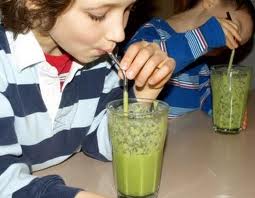
Algae Products: The number of products currently on the market containing, or using, algae is staggering. There are currently dozens of products of algae and soon there will be hundreds. here are just a few.
The paper recycling industry is now focusing on use of algae-based ink which is much easier to break down and will increase the amount of paper which can be recycled.
Paper recycling and algae
Most plant cell walls consist of cellulose, but in algae cell coverings are very diverse. Some algae species have intracellular walls, or scaly cell walls made of deposits of calcium carbonate or silica. Most algae derive structural strength from continuous sulphated polysaccharides in marine algae; other possibilities being cellulose, carrageenan, alginate and chitin. All very useful products in the industrial process.
Product of Algae in Dyes and Pigments

Dyes and Colorants from algae are gaining importance mainly due to health and environmental issues. Algae derivatives are used in emulsion paints which we use to paint our walls. These derivatives are also used in glazing clay and varnish polishes. Algal constituents are crucial in the process of making paper, stabilizing latex and manufacturing polishing wax.
Many pigments from algae can also be used as natural food colorants, for instance in orange juice, chewing gum, ice sorbets, candies, soft drinks, dairy products and wasabi.Carrageenin is an agarlike compound obtained from red algae that is widely used as a stabilizer in paints, pharmaceuticals, and ice cream.
Algae as a food thickener.
Agar is a gelatinous substance derived from cell walls of red algae and has numerous applications. It is used as a culture media in microbiology, thickener in the food industry (soups, jellies and candies) and as a clarifying agent in brewing. It is also used for paper and fabric sizing. Agar is a seaweed product prepared from certain red algae that is used in the manufacturing of pharmaceuticals and cosmetics, as a culture medium for laboratory microorganisms, and in the preparation of jellied desserts and soups.

- Desserts, ice cream, cream, milkshakes, yogurts, salad dressings, sweetened condensed milks
- Sauces: used to increase viscosity
- Beer: clarifier to remove haze-causing proteins
- Fruit Gushers: ingredient in the encapsulated gel
- Soy milk and other plant milks: used to thicken, in an attempt to emulate the consistency of whole milk
- Diet sodas: to enhance texture and suspend flavors
- Vegetarian hot dogs
- Pâtés and processed meats (e.g., ham): substitute for fat, increase water retention, and increase volume, or improve sliceability
Other domestic uses of products of algae
- Toothpaste: stabilizer to prevent constituents separating
- Fire fighting foam: thickener to cause foam to become sticky
- Shampoo and cosmetic creams: thickener
- Air freshener gels
- Marbling: the ancient art of paper and fabric marbling uses a carrageenan mixture on which to float paints or inks; the paper or fabric is then laid on it, absorbing the colours
- Shoe polish: gel to increase viscosity
- Biotechnology: gel to immobilize cells/enzymes
- Pharmaceuticals: used as an inactive excipient in pills/tablets
- Pet food
- Personal lubricants
Algae as animal feed

High mineral content found in marine algae is used for chemical extraction of halogens and potash. Marine algae particularly in Europe is collected and fed to cattle directly or after drying. It has become a popular choice for animal feed.
Algae-based feeds have been proven to be equal to or better than other feedstocks in nutritional value and digestibility, and could free large swaths of arable land and simultaneously address food security issues in an era of rising demand for animal proteins.
Research has already shown that algae can be used as a highly effective component of animal feed, and can be produced with much smaller land and water inputs.
The cultivation of algae for feed could free up millions of acres currently used to produce pasture and feed crops, reducing the tension that exists between food security and bioenergy crops.
Algae in dental castings

Agar-agar, is a vegetable colloid derived from seaweed. This jelly-like substance softens when heated and hardens when cooled.
When the types of algae used for the manufacture of agar-agar from the Japanese coast were no longer available in America during the Second World War, native brown algae was used.
Chemical processing of this material yielded a new elastic impression material with an alginate base, which is easier to use.
Many other novel uses of algae and possible products of algae which can/will be made:
- Adhesives: glues and epoxies: Inspired by the remarkable adhesive capabilities to wet surfaces of the secretes of the brown alga Fucus serratus, novel glues have been designed and marketed.
- Air Fresheners: Gels and Cleaners.Air Freshener Gel- Air freshener gel contains red algae (carrageenan)
- Laxatives contain red algae (carrageenan)
- Chromo graphic media: Constituent separations.
- Firefighting foam: Thickeners to cause foam to become sticky
- Paper sizing and coatings: Textile printing and dyeing.
- Pest control: Fleas and other insects.
- Shampoos and cosmetic creams: Thickeners
There is really no end in sight for products of algae, products using algae, or algae based products.
You might also be interested in...

25 Algae Products That Can Make You Rich
Here are 25 examples of entrepreneurs using marketing and imagination to algae products to bring to market.. Read More

New Algae Based Products
The number of products currently on the market containing, or using, algae is staggering. There are currently dozens of products and soon there will be hundreds. Read More

The Most Important Life Form You Never Knew Existed
Algae, is the building block of every other life form, even human life.. Read More
The Algae Revolution Has Begun
I learned more from your eBook than spending $6,000...
Dear David,
I have learned more from your e-book than spending $6,000 going to the Algae World 2009 Conference in Rotterdam. Do you have the same manual for Jatropha? Many thanks,
Thanks in advance
Perpetual Prosperty Pumps, Africa



